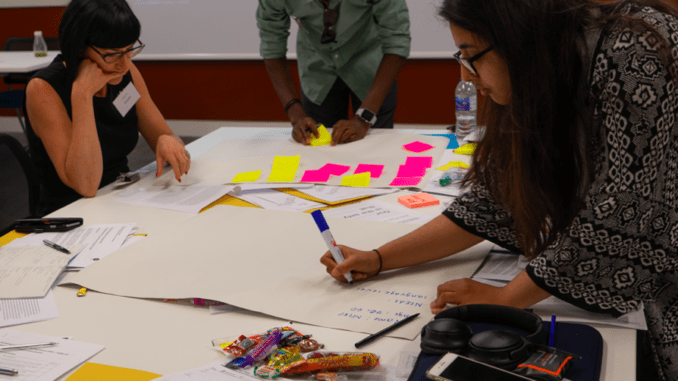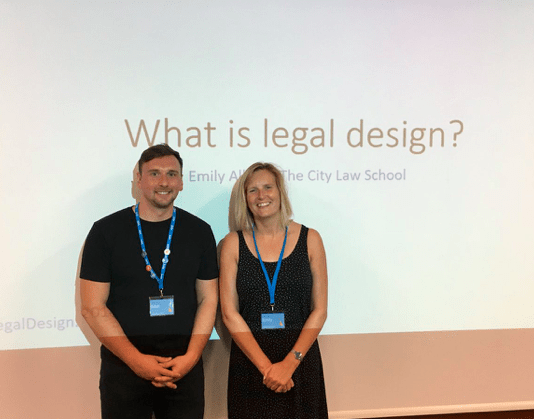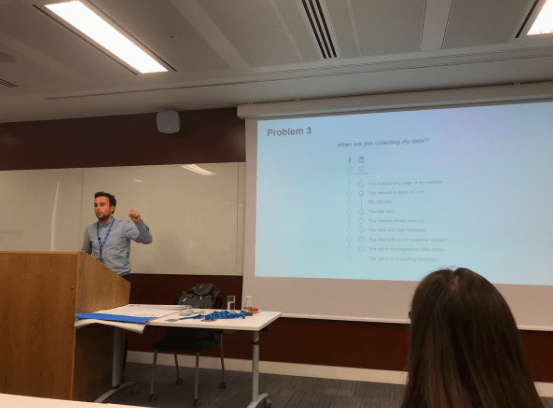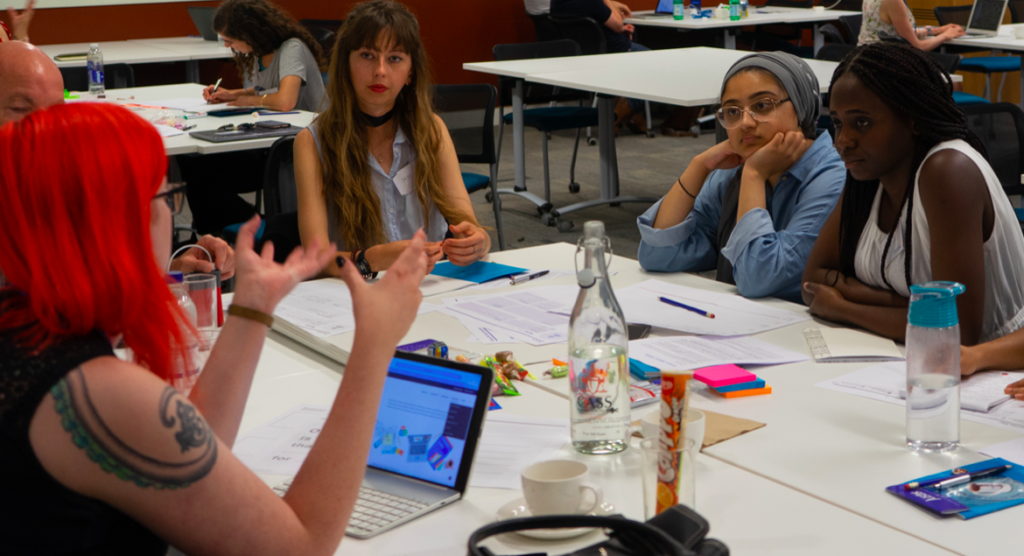
Legal Design Sprint – Event Review
A Guest Post by Matt Terrell, Head of Marketing at Justis
Legal data research company, Justis, recently co-hosted a Student Legal Design Sprint with Emily Allbon of The City Law School, University of London, where a group of highly engaged students began to apply Legal Design to real-world problems, identified by a range of industry experts.

Students from The City Law School, University of London, The London School of Economics and Political Science, Manchester Metropolitan University, Nottingham Trent University, Queen Mary University of London, University College London, University of York, and many more took part on the day (26 July).
The mentors, experts and speakers on the day included: Phil Richards from Jisc, Daniel Hoadley from the Incorporated Council of Law Reporting for England and Wales, Richard Mabey from Juro, Dr Liz Dowthwaite from the University of Nottingham, Andrew Maynard from Ruby Datum, Claire Stripp and David Harris from Browne Jacobson LLP, Justin North from Janders Dean International, Omefe Uduebor from qLegal, and Peter Bradley and Alan Wylie from Citizens Advice.
Introducing Legal Design
The day began with Emily introducing the students to Legal Design, discussing its background and emphasising that it’s about putting the ‘human’ back into law, and making complex legal information understandable and accessible to the people that it affects. Her presentation included numerous examples of Legal Design in the real world, from Candy Chang’s Street Vendor Guide through to Robert Sikoryak’s Terms and Conditions, a graphic novel version of the iTunes Terms & Conditions.

This was then followed by Richard Mabey of Juro, who demonstrated Legal Design in action, through the example of his company re-designing their Privacy Policy to consider GDPR. Key to this process was considering and engaging end-users to ensure that the policy was clear and effective, while also conveying the important information that is required by GDPR.
Key to this was the clear steps of the design process, from understanding the problem through to iterating after testing it with the people that would read it. He closed his presentation by emphasising the key point that Legal Design is about making the material being covered more transparent to the people who need to engage with it.
Sandrine Herbert Razafinjato, a designer with Method, introduced the concept of design to the students in attendance, and the process of design from start to finish. This included stages of exploration and research, defining problems and proposing potential solutions, and designing those proposed solutions, testing and refining them until a well-designed end result is delivered. She emphasised that the user should be at the centre of good design work, and this is especially true of Legal Design.
Five real-world problems
With this primer on Legal Design, students were then introduced to five real-world legal problems by the industry experts invited to the event.
Phil Richards of Jisc’s problem of student contracts, the agreement signed by every student upon starting a degree, was one that all of the students will have engaged with which made it immediately understandable as a problem.
Dr Liz Dowthwaite of the University of Nottingham’s chosen problem of social media terms & conditions was also an immediately recognisable topic.
Daniel Hoadley of the Incorporated Council of Law Reporting for England and Wales introduced his chosen problem of consumer rights, highlighting how it is something that everyone has with every purchase they make, but that there is a general lack of awareness of.
Claire Stripp and David Harris of Browne Jacobson LLP presented the problem of student tenancy contracts, particularly emphasising the confusion between individual and group contracts, and the rights and responsibilities involved.
Finally, Peter Bradley of Citizens Advice Merton and Lambeth detailed the problems faced by applicants in finding information and applying for disability benefits, especially those affected by mental health.
‘Day 1 of the Legal Design Sprint was absolutely fascinating and insightful. As the law plays a part in everyday life, so should Legal Design,’ a student, The City Law School
Five solutions
Each of the five problems the students were presented with offered a lot of material to engage with. As they separated into groups, and with the advice of industry experts and mentors on hand, they began tackling the problems identified and started to work on the design process with the skills they had been introduced to throughout the day.
The day ended with each group delivering a short presentation about the proposed Legal Design solutions they are considering, and every group had fully embraced the skills they were introduced to throughout the event and were working on very interesting potential solutions to the problems they were assigned to tackle.

With each group delivering a short presentation about the proposed Legal Design solutions they are considering, we are very excited to see how their ideas develop before Day Two of the Legal Design Sprint on 6th September.
‘Brilliant to see such engaged and enthusiastic students fired up about legal design – can’t wait to see what they come up with over the summer. Very grateful to all those who got involved and gave up their time to help – our expert speakers, problem setters and mentors,’ said Emily Allbon.
If you have any questions related to the Legal Design Sprint, please contact Emily Allbon (e.allbon@city.ac.uk) or Matthew Terrell (marketing@justis.com). You can also read Emily’s insights into the day, and the background of the event on Lawbore.
1 Trackback / Pingback
Comments are closed.